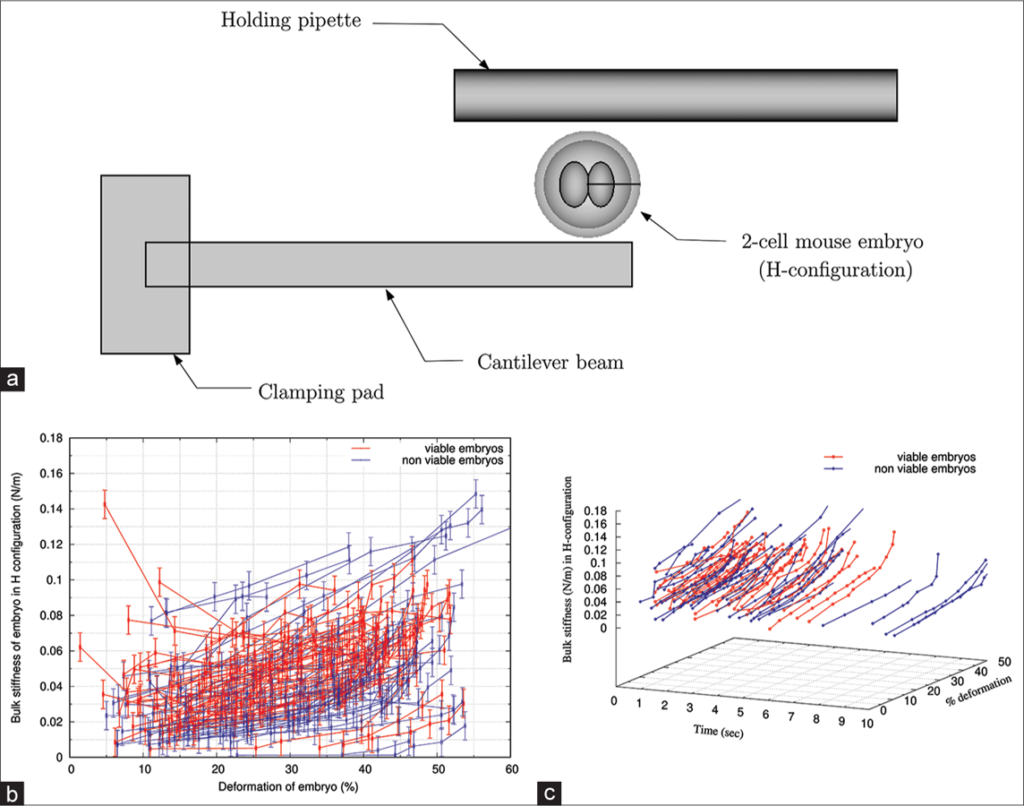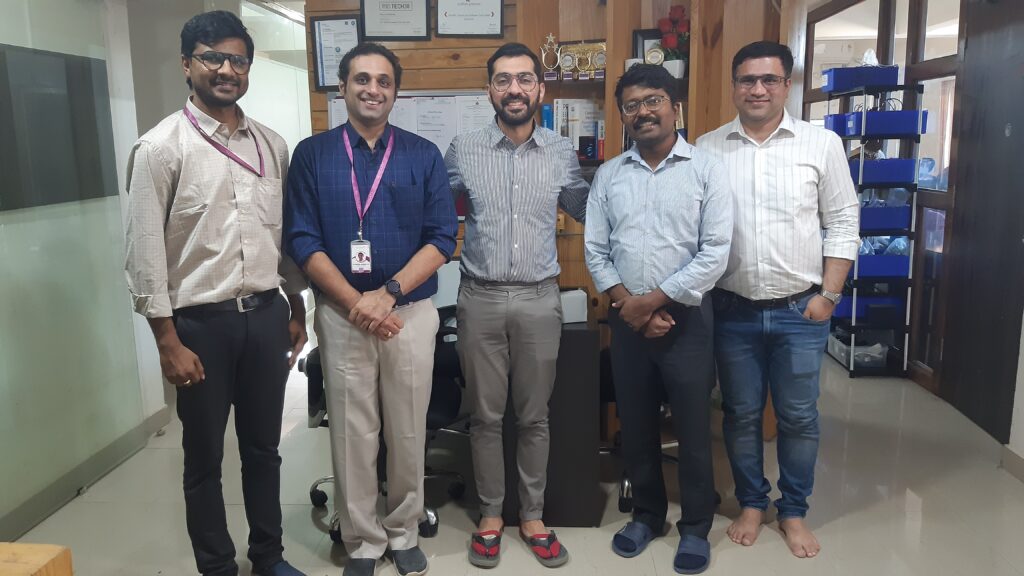Positioning and pipette alignment problem
During ICSI aligning the holding pipette (HP) and injection pipette (IP) in a straight line is very important. Proper alignment is important to avoid the IP entering the oocyte in an angle relative to the HP. If this happens then it creates increased tension on the oolemma, which may lead to tearing of the oolemma. This also leads to miss-deposition of the spermatozoa into the oocyte. [2]
If both the pipettes are not in same plane the oocyte starts rotating off the holding pipette and as injection pipette passed into the oocyte, due to this, the oolemma stretches and it will be prone to rupture. [1]
A tension gets created if a bevel tip of holding pipette is not in parallel to bottom surface of the Petri dish, hence the holding of the oocyte becomes difficult, as the base of the dish avoid the oocyte from meeting squarely on to the holding pipette. [1]
RoboICSI: RoboICSI alignment can be controlled with few touch point actions and getting the RoboICSI Holder in plane with the IP is very easy. And during the alignment of RoboICSI Holder there is no fear of the consumable getting damaged. RoboICSI is highly robust compared to HP.
Suction pressure problem
To immobilize the oocyte firmly, air/oil suction is used, and a petite portion of the oocyte is repeatedly sucked into the holding pipette.[1]
This process creates tension in the membrane surrounding the oocytes and thus when an injection pipette is pushed against oolemma, the oocyte is prone to rupture. [1]
RoboICSI: This is a suction free type of immobilization.
A modification in existing holding pipette for promoting oocyte wound healing!!
New technique for mouse oocyte injection via a modified holding pipette by Lyu QF et.al . In this study, a holding pipette (HP) is modified to a trumpet-shaped opening for deeper injection into the oocyte as it is immobilized. [3]
This modified HP with trumpet-shaped opening with 45-55 micrometer ID at the end allows some zona and oolemma to be drawn into the trumpet, which provides more depth for insertion of injection pipette. The advantages of this type of modification are, they allow the oocyte membrane channel to stretch and naturally prolongs the time of extended oocyte membrane channel to return to its normal shape. As a result healing of wounded oolemma will be complete. [3]
Even in case of RoboICSI the holder is designed so that the oocyte is immobilized in such a manner that it provides more depth for deeper injection which has the same advantages as mentioned above.
Fertilization rate is higher when the sperm is deposited near the meiotic spindle
Fertilization rate is higher when the sperm is deposited near the meiotic spindle
Highest fertilization rate was found when sperm cells were injected adjacent to the meiotic spindle. It all depends on positioning of polar body relative to the opening of injection needle and this is obtained when the polar body is placed at 6’o clock position. [4]
Assumption: Immobilizing the oocyte using RoboICSI brings the polar body near to the sperm irrespective of position of polar body, either 6 or 12’o clock. When the oocyte injected from 3’o clock position, the deposition of sperm will be very near to the polar body compared to the conventional method.
Importance of cumulus and immobilizing the oocyte with cumulus
The percentage of embryos reaching to blastocyst stage in IVF is more compared to ICSI. Cumulus cells possess highly specialized trans-zonal cytoplasmic projections that pierce through zona pellucida and form gap junctions at their tips with the oocyte. This intimate association allows cumulus cells to fulfill vital roles, supporting the maturation of the oocyte and relaying endocrine and other environmental signals. According to studies performed with the oocytes possessing cumulus clusters, these type of oocytes showed significant increase in blastocyst formation. [5]
Assumption: RoboICSI can seamlessly immobilize the oocytes with cumulus and helps in injection.
References:
- https://www.researchgate.net/publication/267979757_Oocyte_Degeneration_Subsequent_Intracytoplasmic_Sperm_Injection_ICSI
- http://journals.sagepub.com/doi/pdf/10.1177/205891581000100207
- https://www.rbmojournal.com/article/S1472-6483(10)00458-X/fulltext
- https://www.ncbi.nlm.nih.gov/pubmed/10527988
- https://academic.oup.com/humrep/article/21/11/2972/2939480




